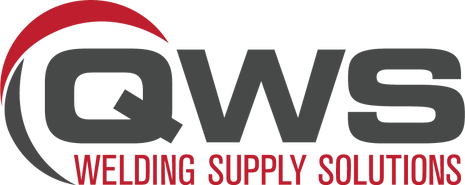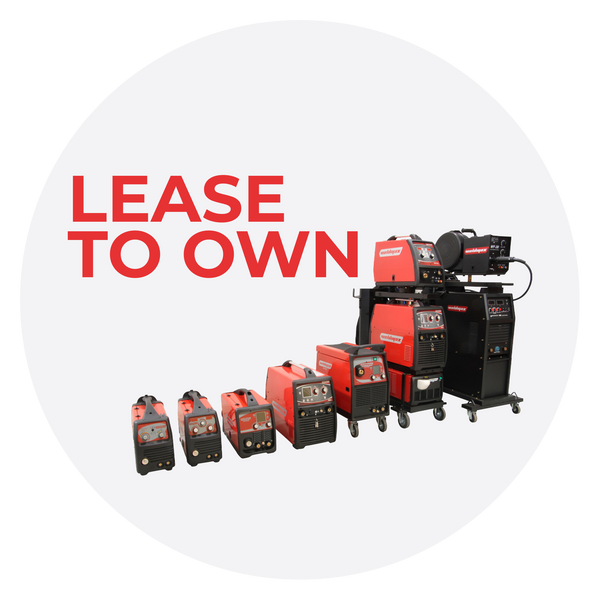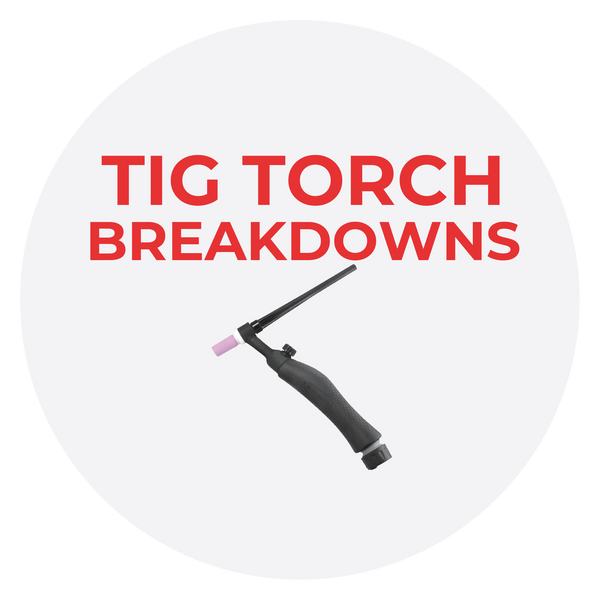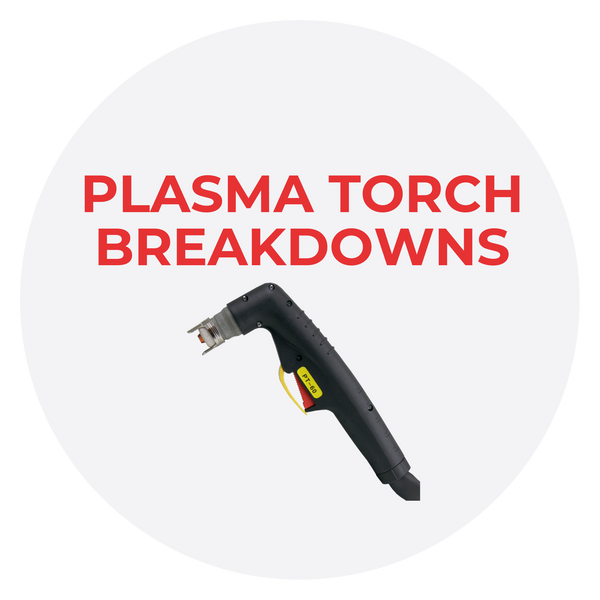
A Practical Guide to Welding Fume Control
There is a critical need to give workplaces clear and practical advice that can help to keep welding fume exposure to an acceptable level.
This guide is based on a simple premise - the health risk posed by welding fume is serious, however, keeping yourself safe can be straightforward.
Consequently, in this guide, we outline the dangers of welding fume and then give you actionable and practical guidance based specifically on the welding industry.
Welding Fume Is Serious. Action Is Required.
The important point to understand is that while the risk posed by welding fume is serious, keeping yourself safe can be straightforward.
The 2017 IARC reclassification of welding fume as ‘carcinogenic to humans’ simply confirmed what was already known – welding fume is extremely bad for health and workplaces must protect their workers.
Excessive exposure to welding fume can cause multiple types of cancer, including lung, larynx, and urinary tract.
‘Welders present, on average, a 43% increased risk of lung cancer when compared with those who have never welded or been exposed to welding fume’
Simple Takeaway
There is no known level of safe exposure to welding fume: action is required.
‘This increased risk of lung cancer is regardless of the type of steel welded, the welding process and independent of exposure to smoking’.
Precedent for workers’ compensation based on a link between welding fume and cancer was established in the Australian courts back in 2014, opening the door for future compensation claims.
Aside from cancer, welding fume can also cause serious long-term health effects like lung function abnormalities, including bronchial asthma,
chronic obstructive pulmonary disease (COPD), pneumoconiosis and other pulmonary fibrosis, as well as stomach ulcers, kidney damage and nervous system damage.
Recognising welding fume as carcinogenic and the other associated health risks should encourage all employers of welders to review their risk assessments and revise their control measures.
There is no known level of safe exposure to welding fume: action is required.
A Practical Guide to Fume Control
Applying a practical approach to the ‘Hierarchy of Control’.
The hierarchy of control is a step-by-step system for controlling risks in a workplace. This framework is used across a range of industries and while it applies to welding, it was not built specifically for the welding industry.
So, while it is important to understand the overall framework, a control framework built specifically for welding fume may be valuable to those seeking to understand how to protect their welders or themselves.
To give you a more simplified and practical approach to controlling welding fume, we offer the ‘Practical Guide to Fume Control’ comprising of three steps: 1. Mitigation of Risk, 2. Product Controls and 3. Administrative Controls.
Figure 1.1 - A Practical Guide to Fume Control

Mitigation of Risk
When it comes to welding fume, all efforts should be made to mitigate the risks where possible.
Examples include:
• Removing surface coatings on materials.
• Changing to less hazardous materials (both consumables and base materials).
• Using a welding technique that produces less fume (different application or working with lower amps)
• Where possible, workers should position themselves to ensure they keep their heads away from the plume and also ensure any ventilation airflow moves the welding fume away from the breathing zone, not through it.
While the highest levels of controls (elimination and substitution) within the ‘hierarchy of control’ give the highest level of protection and reliability in many industries, they are often not practicable or possible when it comes to the welding industry. Substituting materials can result in quality issues and using lower amps is often not an option.
Even when you can mitigate risk, if there is welding to be done, there will be welding fume. Welding fume is inherent in the process of welding. As a result, we see that in the welding industry, the higher levels of control can often only mitigate the risks associated with welding fume, making the lower levels of control essential.

Product Controls
Welding Personal Protective Equipment (PPE)
In relation to the hierarchy of controls, PPE is often referred to as the last resort. When it comes to welding, suitable PPE must always be worn. PPE for respiratory protection from welding fume is commonly available in two main forms: 1) Welding Helmets with integrated respiratory protection and 2) Half mask respirators.
Welding Helmets with Integrated Respiratory Protection
‘Welding helmets with integrated powered air
purifying respirators (PAPR) are the most widely
used form of respiratory protection amongst
welders in Australia and New Zealand’ and are
mandatory within many businesses.
They have a Required Minimum Protection
Factor (RMPF) of 50, meaning that they supply
breathing air a minimum 50 times cleaner
than the welder would otherwise be breathing
unprotected and can also protect the welders’
eyes and face from radiation and high velocity
particles. Integrated hard hats (safety helmets)
and earmuffs are also available with these
systems to give welders five levels of protection
(eye, face, respiratory, head, hearing).
With a flip-up welding helmet with powered
air respiratory protection, welders can have
completely clear and uninhibited views of their
workpiece and surroundings while maintaining
their desired level of respiratory protection
with no breathing resistance. The powered air
respirator goes where the welder goes, allowing
unrestricted movement around the workplace
with clear vision, comfort, and uninterrupted eye,
face and respiratory protection.
A recent study conducted within a large
manufacturing company with over 1,500
employees, including 600 certified welders,
found that ‘foreign body eye injuries decreased
over 70% year-on-year in areas that implemented
the PAPRs with integrated flip-up auto darkening welding helmets. Worker compensation claims
decreased markedly while employee morale
increased substantially’. PAPRs can provide protection to welders using the
most common materials (aluminium, stainless
steel, galvanised steel etc.) and applications
(MMA, TIG, GMAW, FCAW, SAW) where there is an
environment with general shop ventilation.
In restricted spaces*, a welding helmet with
integrated supplied air respiratory protection will be
effective
The next page features a practical guide to welders’ personal protective equipment based on the material to be welded, the welding process and the ventilation conditions of your working environment.

Image: An example of a flip-up auto-darkening welding helmet with an integrated powered air purifying respirator.

Figure 2.1 - A practical guide to respiratory protection based on material, process, and environment.


This chart has only been provided as an example and is provided as a basic guideline. It should not be used as the only means of selecting a respirator. Powered and
supplied air respirators must never be used in atmospheres Immediately Dangerous to Life or Health (IDLH) without emergency breathing device capability (AS/NZS1715).
Always consult your Safety Engineer or Occupational Hygienist.
*A ‘restricted space’ for the purposes of this document refers to a situation where 1) local exhaust ventilation (LEV) fume extraction is not possible due to a limitation of
space, 2) general plant air (dilution) can not effectively reach the welder and 3) the space is not a confined space as defined by AS2865.
Half mask respirators
Disposable or reusable half mask respirators can be worn underneath a welding helmet to provide a RMPF
of 10. The welder must be fit tested (annually is recommended) and clean shaven to ensure an effective
negative pressure seal.
When compared to disposable and reusable half-face mask respiratory protection, PAPRs provide superior
respiratory protection and comfort and do not require fit testing or a complete clean shaven condition.

Image: An example of a disposable half mask respirator (left) and a reusable half mask respirator with replaceable filters (right).
Figure 2.2 - Quick Reference Welding Respiratory PPE Comparison Chart

* Welding helmets with integrated powered air respiratory protection have a RMPF of 50. Welding helmets with integrated supplied air respiratory protection have a RMPF
of 100+.
** Weight based on 3M™ Adflo™ PAPR. Weights of PAPR’s available in the market can vary significantly.
Practical Engineering Controls - Extraction
Ventilation can assist in reducing exposure to welding fume and other airborne contaminants. There are two key practical ventilation controls you can introduce:
Local Exhaust Ventilation (LEV)
Properly located LEV can capture welding fume at the source, which is the most effective way to collect and remove fumes. Popular options consist of fixed installations, portable systems and on-gun extraction. It is recommended that respiratory PPE is always worn in combination with LEV.


Image: An example of a two arm portable LEV extraction system (left)
and a lightweight portable version suitable for on-gun extraction (right).
Dilution Ventilation (General Shop Ventilation)
‘General shop ventilation’, as it is known in the industry, occurs when contaminants released into the workshop mix with air flowing through the room. Dilution is not as effective as LEV in controlling welding fume exposure as large volumes of dilution air may be required and it is extremely difficult to control individual exposure near the contaminant source where dilution has not yet taken place.
This option should only be used to control low levels of welding fume. It is recommended that respiratory PPE is always worn in combination with General Shop Ventilation. It should be noted that natural ventilation (eg. wind) is not a reliable way of diluting or dispersing welding fume.
A Practical Approach to Product Controls
A combination of ventilation and respiratory PPE is the most practical and effective ‘product control’ method
to protect workers from welding fume. Respiratory PPE should always be worn to complement the use of
ventilation. The figure below gives you practical advice on how to select respiratory controls for full-time
welders based on the options outlined previously and what is most effective for the welding industry.
Figure 2.3 - A practical approach to product controls

This chart assumes that all efforts to mitigate risk associated with welding fume through elimination and substitution have been carried out. Procedural controls (eg. minimise work conducted in restricted spaces, training on PPE, ventilation maintenance) should be introduced to support PPE and ventilation controls. This chart does not address confined spaces as defined by AS2865 or atmospheres Immediately Dangerous to Life or Health (IDLH). If you require advice on these environments please contact AWS (www.awsi.com.au). Consultation with a PPE and extraction expert such as AWS (www.awsi.com.au) and an occupational hygienist is recommended to ensure your specific application, environment, materials, and limitations (space, need for mobility) are considered.
Administrative Controls
Procedural controls must be introduced to support product-based controls.
Training and product maintenance
As an employer, once you have selected the
appropriate PPE, ‘you must provide the worker with
information, training and instruction in the proper
use and wearing of that PPE’4. Proper guidance
should be given on the storage of equipment and
care and maintenance guidelines should be clear
and followed.
For LEV systems, you must implement a
maintenance and test regime to ensure proper
operation.
Ensure you select suppliers who can not only
provide equipment, but also administer the required
training and support. Also, ensure all required spare
parts are readily available and stocked.
Working area considerations
• Minimise work conducted in confined spaces.The product controls outlined in this guide are not rated to protect the welders in confined spaces or atmospheres Immediately Dangerous to Life or Health (IDLH). For guidance on these environments please contact AWS (www.awsi. com.au).
• Introduce a dedicated area for welding.
• Control access to the working area.


Confined Spaces
All practical advice in this guide to this point has
excluded confined spaces.
Confined spaces are complicated when it comes to
welding. A safe atmosphere in a confined space is
one that has a safe oxygen level, is free of airborne
contaminants (or in concentrations known to be
below their allowable exposure standard), and any
flammable gas, vapour or mist is at concentrations
below 5 percent of its lower explosive level.
However, when welding, especially in an enclosed or
partially enclosed space, it is normal for any welding
task to at least potentially create an atmosphere
that has airborne concentrations above the relevant
exposure standards or >5% of relevant explosive
limits.
So, how do you identify a confined space and what
practical steps can be taken should welding be
required within a confined space?
Figure 3.1 - How to identify a confined space relevant to welding.

‘Confined spaces pose dangers because they are
usually not designed to be areas where people
work. Confined spaces often have poor or no
ventilation which allows hazardous atmospheres to
quickly develop, especially if the space is small’.
‘A confined space is determined by the hazards
associated with a set of specific circumstances
and not just because work is performed in a small
space’. ‘Entry into a confined space means a
person’s head or upper body is in the confined
space or within the boundary of the confined
space’.
Within the welding industry, confined spaces
are commonly found in tanks, pipes, containers,
pressure vessels, shafts, tunnels or other similar
enclosed or partially enclosed structures.

How to control welding fume when welding in a confined space is unavoidable:
• Confined spaces can be deadly and decisions
on how to handle a specific confined space
must be assessed on the spot and always
comes down to the specifics of the individual
situation.
• Confined spaces are a multifactorial issue, and
protection against welding fume is only one of
the issues that needs to be considered.
• There should be a suitably trained and
knowledgeable person doing the assessment
and design of a safe system for any confined
space entry.
If welding in a confined space, ensure that the
employee doing the confined space assessment is
suitably trained having completed a confined space
course by a qualified training company or engage a
trained consultant. If unsure, please contact AWS
(www.awsi.com.au) for more information.



Who is responsible?
The employer has the primary responsibility to
ensure that welding fume exposure is controlled,
and welders are protected.The two key points
regarding employer responsibility are as follows:
• If employers are unsure whether the welding
fume exposures at their workplace exceeds the
relevant exposure standard, OH&S regulations
require that they must ensure air monitoring is
carried out.
• Under both the Australian Work, Health and
Safety Laws and the New Zealand Health and
Safety at Work Regulations, the employer is
financially responsible for providing PPE to
workers and must not charge anyone for
using PPE.
When selecting suitable PPE, the employer, where
reasonable, should consult with the welders. A
welder’s knowledge, experience and personal
preferences improve the overall decision-making
process. As someone who is directly affected by
welding hazards, a welder is entitled to take part in
the consultation process and selection of suitable
PPE.
Personal preferences are the key to user
acceptance – so look for gear that welders feel
comfortable wearing. As a welder, you should
aim to educate yourself on the risks, understand
the appropriate PPE available and look to involve
yourself in the consultation process and ultimate
selection of suitable PPE.
For guidance on air monitoring in Australia and New
Zealand, please contact AWS (www.awsi.com.au).
Exposure limits are just the beginning
The exposure standards in Australia and New
Zealand ‘do not identify a dividing line between a
healthy or unhealthy working environment’. They
simply establish a legal maximum upper limit.
‘Therefore, exposure standards should not be
considered as representing an acceptable level of
exposure to workers’.
Take for example, a welder operating within the
workplace exposure standards for general welding
fume (5 mg/m3). If the welder is wearing no
respiratory Personal Protective Equipment (PPE),
they could inhale up to 11 grams of a carcinogenic
substance (welding fume) every year*.
Moreover, an Australian or New Zealand welder
operating under the legal workplace exposure limits
for welding fume in Australia is exposed to 4 times
the level of a known carcinogen than that of a
German welder working under the TGRS 528 (1.25
mg/m3) exposure limits in Germany.
The world has shifted to more of a health and safety
focus—the result of court cases and research.
Australian and New Zealand companies are now completely changing their stance on welding fume and welders’ PPE.
The 2017 reclassification of welding fume as carcinogenic prompted many to rethink and challenge what was historically considered ‘normal’. The 2019 statistical analysis concluding that welders have a ‘43% increased risk of lung cancer’1 regardless of the type of steel welded, the welding process or time-period is of serious public health relevance.
Being aware of information like this should act as
the trigger at your workplace to introduce PPE with
higher protection factors to give exposed workers
the protection they deserve.
For a step-by-step summary on how to get started,
please find the enclosed ‘blue-print to welding fume
control’ or get in touch with AWS (www.awsi.com.au).


SHOP OUR RESPIRATORY PROTECTION
As a safety advocate QWS Welding Supply supports AWS in promoting and recommending the use of safety equipment & respiratory protection in the welding industry, let us all spread awareness and support this drive for a better, healthier future of welding. Equip yourself today with the proper protection with QWS…






